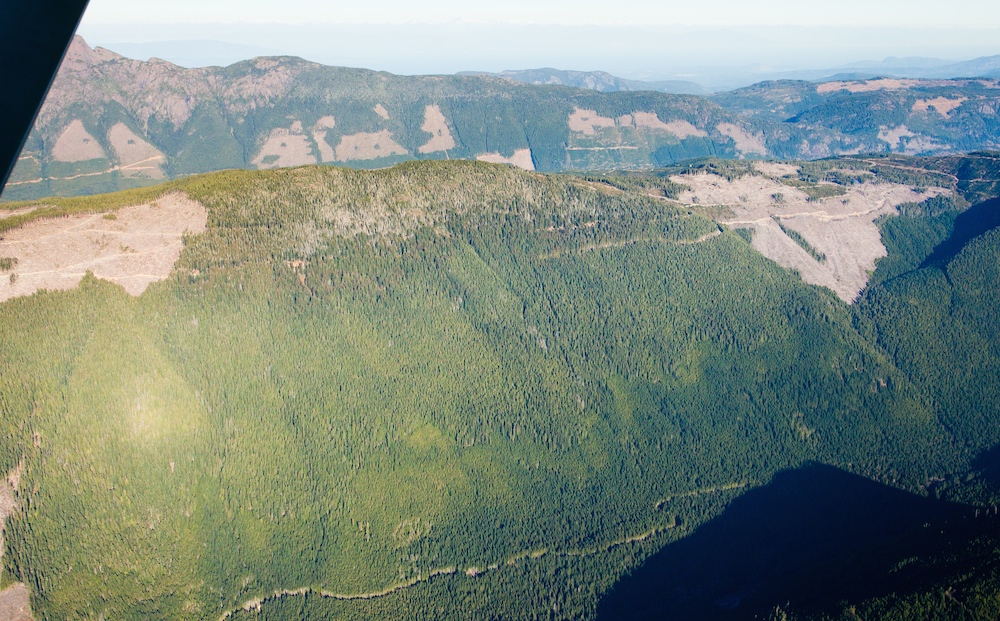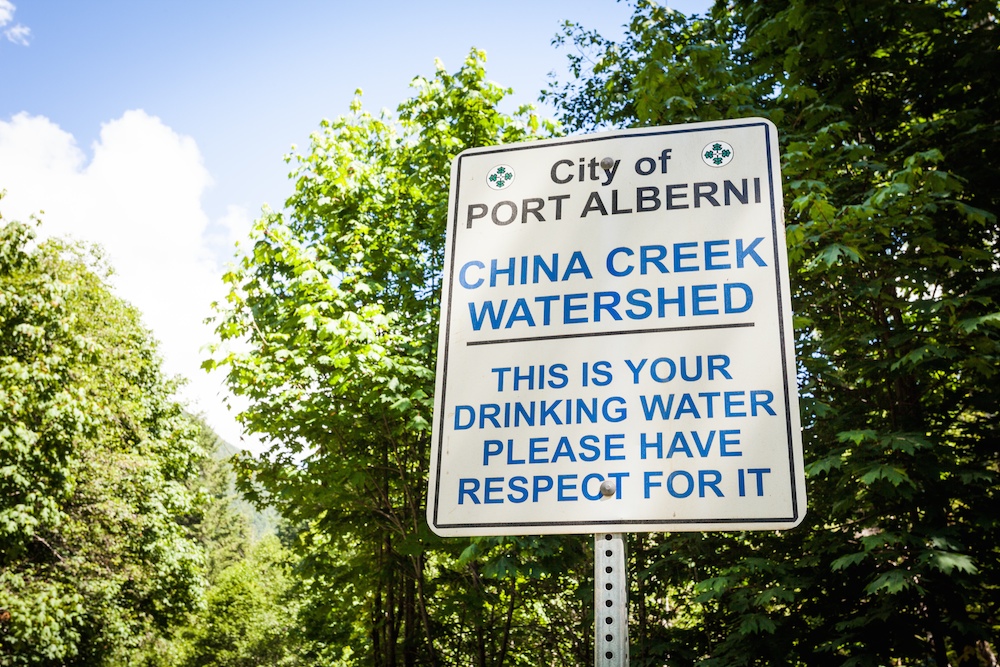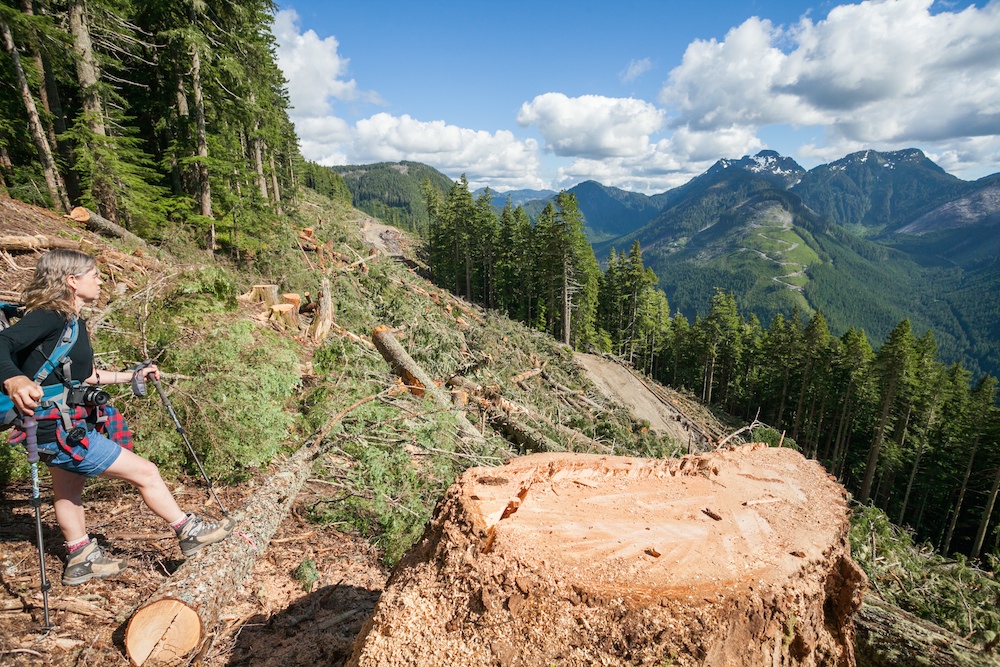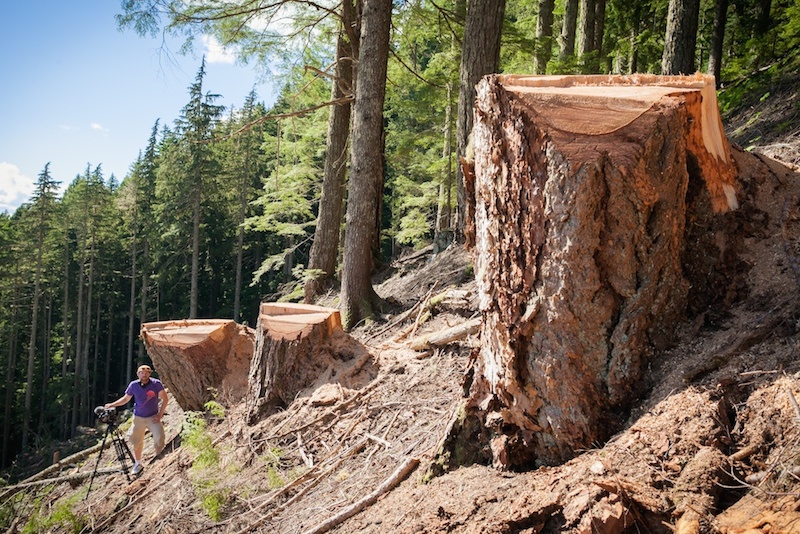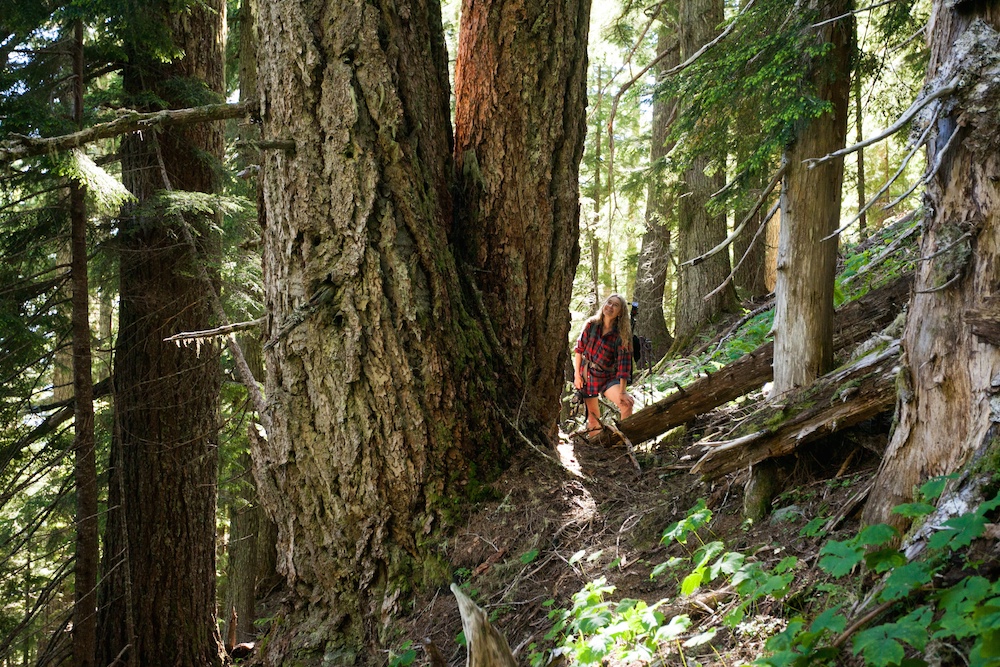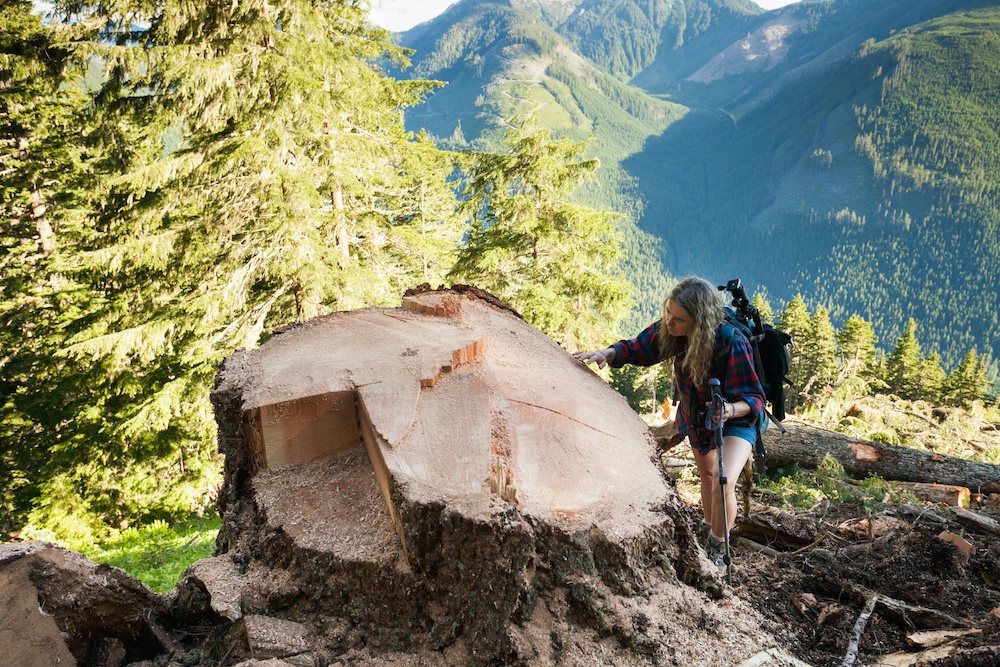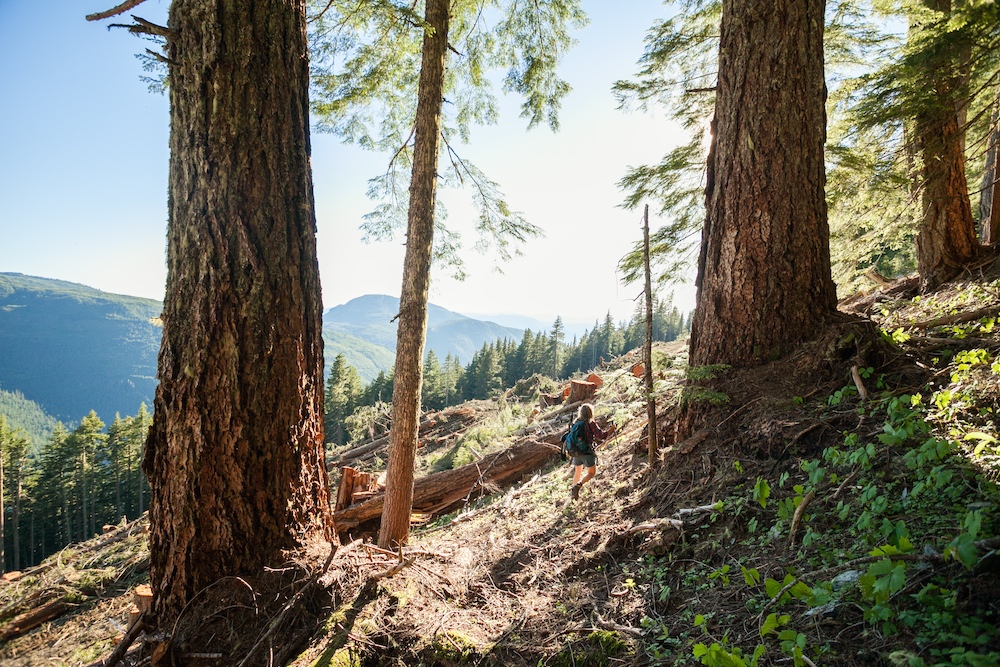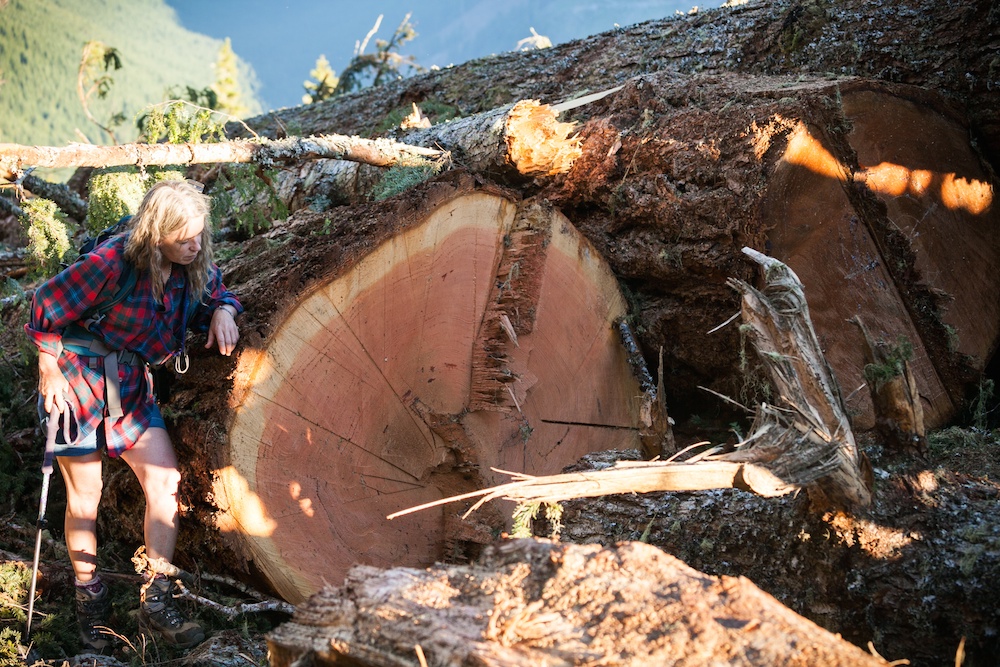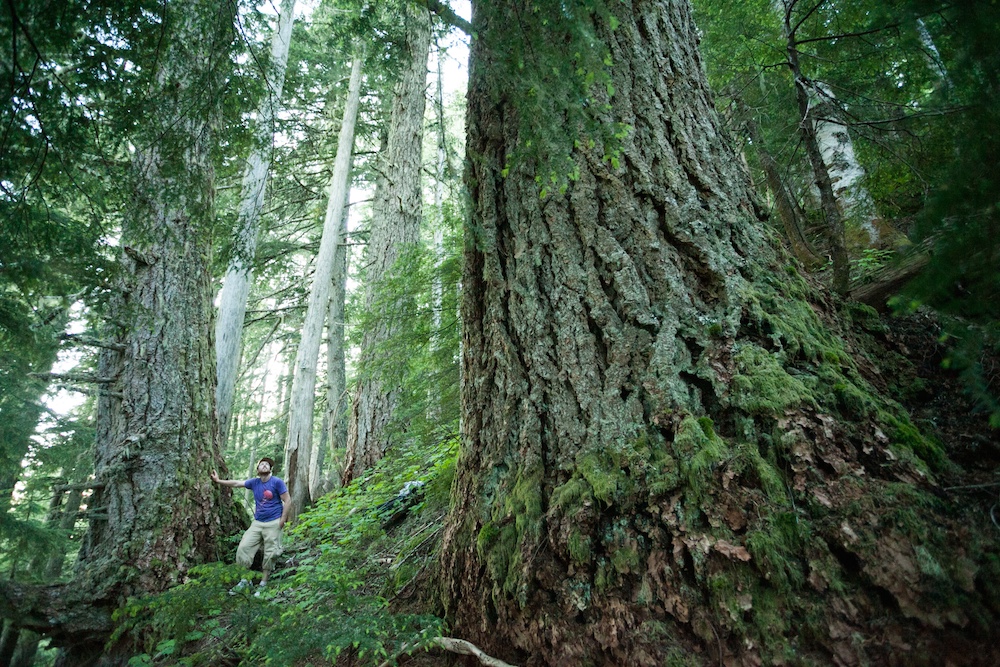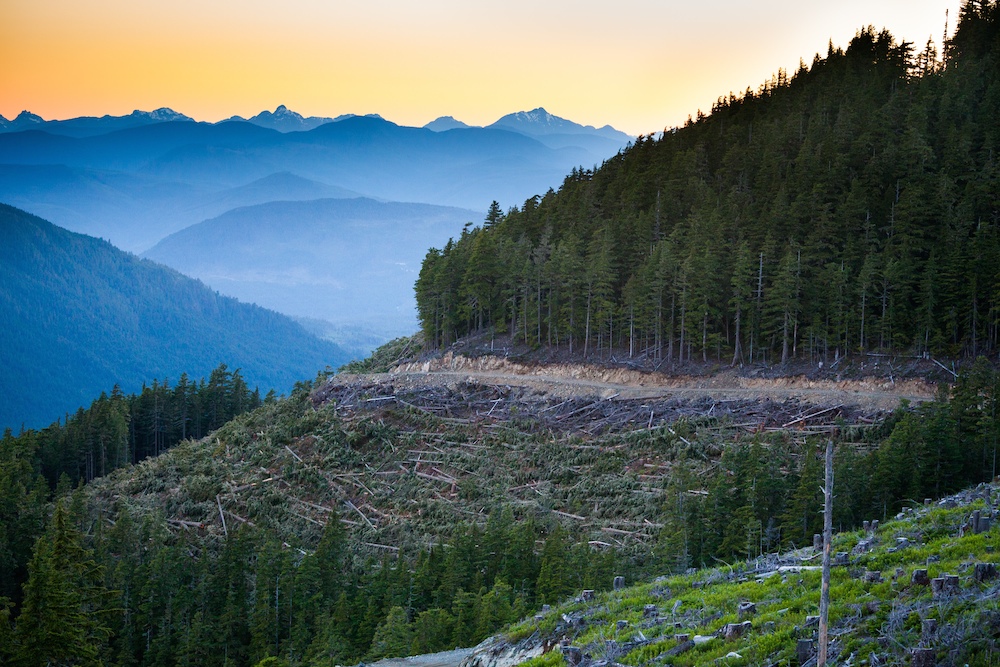In order to understand what's at stake on Cortes Island and elsewhere on BC's coast, one has to travel to Port Alberni to see what's already been lost.
Port Alberni, historically a logging and port town, is currently undergoing intensive logging by Island Timberlands. One might not see it from the main highway, but as soon as you get into the back country logging roads, clear-cuts span from horizon to horizon. It's an awful sight. However, the company likes to point to the fact that everything they do on their private, fee simple lands are totally legal. But how did one private company come to own hundreds of thousands of acres of forestland around Port Alberni, including its Watershed?
All photos from TJ WATT
In 2004, the BC Liberal Government allowed US logging company Weyerhaeuser to remove its private lands from Tree Farm License 44 around Port Alberni, (for a deeper exploration of how these lands became privatized, please check out "The Great Land Grab"). This eliminated many of the environmental protections that were put in place under the public system, some of which included protections for deer and elk winter ranges on McLaughlin Ridge, deemed by government scientists to be some of the last and best habitat left in the region. In total, 2400 hectares of land lost environmental protections in this deal.
Today, these same lands have passed onto logging giant Island Timberlands (IT), now the second-largest landowner in BC (second to TimberWest, who is also logging in the area). Island Timberlands, formerly a subsidiary of investment firm Brookfield Asset Management, is majority owned by the BC Investment Management Corporation – the arms length investment firm of the BC government that manages public sector pension funds. This means that teachers, police officers, fire fighters, and all government employees in BC have their pensions invested in Island Timberlands. Their primary business model is exporting raw logs to markets in the US and Asia, where they can fetch the best timber prices.
Despite Port Alberni's long history as a logging town, there is opposition to Island Timberlands' logging practices. Their culture of vastly over-harvesting, high-grading the last of the old growth, logging in watersheds, and exporting the logs abroad, does not sit well with even some of the most veteran loggers. Thanks to the leadership of the Watershed Forest Alliance and the help of the Ancient Forest Alliance, the Teachers Federation (whose pensions are invested in IT, remember) have passed a motion to oppose IT's logging on Horne Mountain above Cathedral Grove. The Port Alberni city council has also added its name to the list of voices calling on IT to halt its logging in the community watershed.
Ultimately, the only thing that will protect these lands is if they are purchased and protected by covenants. The environmental groups would like to see Island Timberlands stop logging in the most contentious areas – which add up to only 1% of Island Timberlands' land-base – as a sign of good faith and to give them time to fundraise to purchase these lands. But the only institution with pockets deep enough to be able to afford to make this large of a purchase is the BC government – the same government that created this mess. And thus far, Minister of Forests, Lands and Natural Resource Operations, Steve Thomson, has shown little or no interest in righting past wrongs.
Having traveled to these places numerous times and talked to people in the community, who are desperate to see these lands protected, I can attest to the passion and dedication of this small band of citizens who are leading this movement in Port Alberni. I can affirm the sacredness and uniqueness of these tiny pockets of ancient forest that remain. And I can testify to the extent of the carnage that is rampant on Island Timberlands' forestlands. I am encouraged by recent statements made by the Teachers Federation and the Port Alberni city council to give some heed to the future of their forests, their forestry industry, and their drinking water. However, it seems that the stronger the opposition becomes, the more intensely Island Timberlands resolves to continue with business as usual. What BC needs is a dedicated fund to purchase and protect endangered ecosystems on private lands before they are logged. Otherwise, they will fade out of existence forever.
Read more about the Ancient Forest Alliance's campaign to create a BC Park Acquisition Fund.
Learn more about the Ancient Forest Movement in BC or become a member of the AFA.
Learn more about Island Timberlands' logging in Port Alberni and support the Watershed Forest Alliance.


